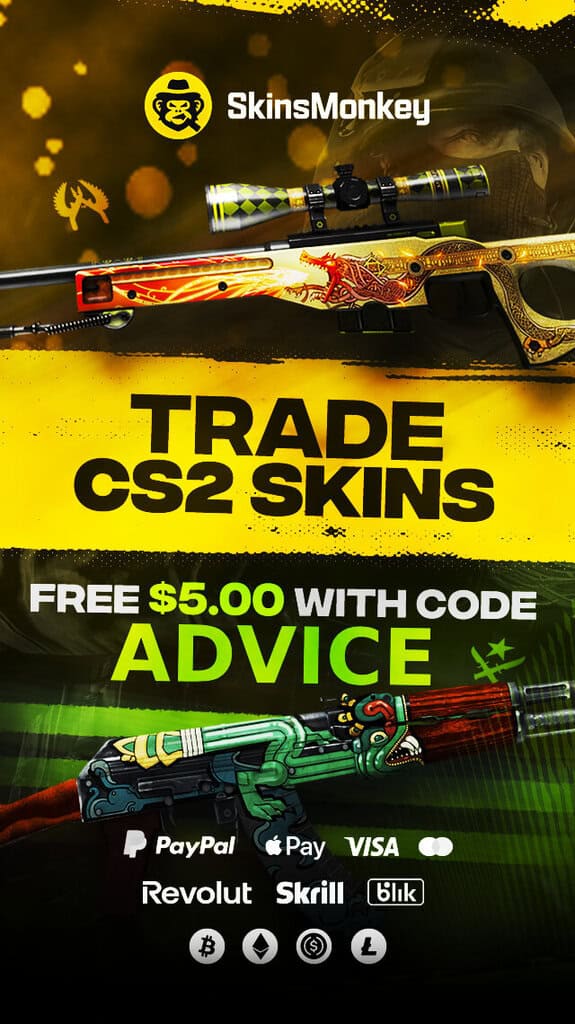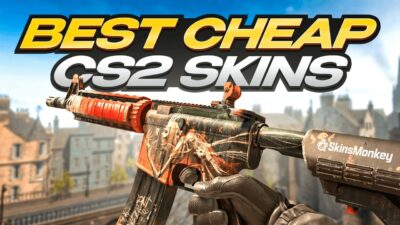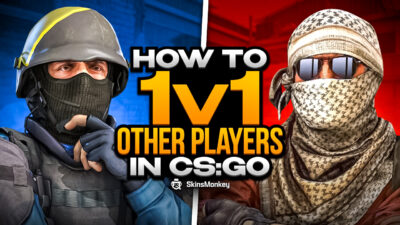The economy plays a crucial role in CS2, much more than most players imagine. It's important to understand how the CS2 economy works and how to use it effectively to your advantage before jumping into ranked games. Understanding the difference between eco round and pistol round can mean everything to your team's economy, and in turn, have a great impact on your overall match performance.
Financial management plays a very important role in any team's success, and understanding how to budget your CS2 money is a key skill you must master before reaching higher CS2 ranks. Here is a guide to everything you need to know about how money works in CS2 and how to manage your team's money responsibly.
Want to spend some real money? Check out Skinsmonkey, where you can always trade CS2 skins for best prices possible!
What Is The CS2 Economy?
One of the most important part of every CS2 round is buying items at the start. At the beginning of every round, the players receive a different amount of the in-game currency, depending on the previous round result, and have to spend it to buy armor, grenades and guns for themselves, as well as their teammates. Any unspent money and weapons and armor saved from the previous round carry over to the next, unless you get killed, in which case you lose your entire inventory except your cash.
The entire infrastructure of earning money, buying and dropping weapons is known as the game's economy system. Players who spend wisely can save money and make sure that they have enough funds in the future rounds.
Strapped for cash? Check out our guide on how to sell CS2 skins for real money!
How To Earn Money In CS2?
Generally speaking, the easiest way to earn cash in CS 2 is to kill other players. You score money for each kill, so the more enemy team members you eliminate, the more money you'll receive. The amount of cash each weapon kill gets you highly depends on the individual weapon, and different guns will give you different kill rewards, most of the time the guns that are harder to use have better kill rewards. This means that CS2 assault rifles will give you different amount of money then pistols, CS2 sniper rifles or shotguns.
Outside of killing other players, you score money for each round win, as well as each loss. While the game rewards the losing players with a little extra monetary edge to give them a fighting chance, losing subsequent rounds isn't recommended.
There are three main methods to earn money in CS2:
- Round win – Each team receives $3250 for winning rounds by killing all the other team members (in case of the T side, you also receive this reward after the CTs run out of time)
- Winning rounds with a C4 explosion – $3500 (Available only to the Terrorist team)
- Defusing the C4 – $3500 (Only for the CT team)
- Losing subsequent rounds – This also gives you money in CS2 and was meant to even out the game and prevent either of the teams from getting too far ahead in the game. Your first loss will reward you with $1400, while each subsequent one will raise that number by $500, until you get $3400 after each loss.
What Round Types Are There In CS2?
When playing CS2 you've probably already heard terms like eco rounds or force buy. These are used to describe the general pattern you should be following when purchasing weapons on that round. While it might be tempting to immediately spend all your money, remember that smart investments are the key to winning against the opposing team in CS2. Here are the five different round outcomes you should remember:
1. Eco
An eco round is generally what your team will need if all of the teammates are below $2000 mark. The point of eco rounds is to save enough money to force buy and get back at your enemy in a round or two. In addition, most of the time the team that loses the opening round will have to go eco next round. The entire point of the eco round is not to buy anything at all to gain an economic advantage. It's also possible to have an eco round or two in a row to save enough money for a full equipment.
2. Farm
Also known as anti-eco by professional teams, this one is when your team purchases smaller arms, such as CS2 SMGs, to earn money by scoring as many kills as possible. Farm rounds encourage players to buy short-range weapons and play aggressively, however, a farm round when your opponent's economy allows them to play full buy isn't a good idea.
3. Full buy
The full buy round generally happens when the entire team is holding more than $5000 for each player and how many rounds are still left. During a full buy round each team member is encouraged to spend all of their money on armor, grenades, and the best possible rifle they want to play on. This is generally when you start seeing the AWP in higher ranks, as well as the auto sniper if it's a later stage of the game.
4. Semi buy
Also known as half buy rounds, these are generally played when your team is doing ok, but some players are struggling to break the $5000. During Ssemi buy rounds some gamers either settle for the weaker SMGs, or their team members purchase and drop guns for them. While most players during the semi buy round won't be able to afford an AWP or SCAR-20, you can definitely expect to see some M4A4 and AK-47.
5. Force buy
Desperate times call for desperate measures, and if you absolutely need to win current round, then your team will most likely have to resort to doing a force buy. during every force by round, you simply have to spend as much as you can and hope this will make do. Force buy rounds happen most of the time when one of the sides is doing very poorly and desperately needs to bounce back, so you generally want to avoid landing yourself in that spot.
In Conclusion
Here's everything you need to know about the CS2 economy. If you'd like to learn anything more about the game, make sure to check out the rest of our blog, where we regularly post tips, tricks and guides for CS2! Also, make sure to take part in our free CS2 skins giveaways!
A true gaming enthusiast, especially Counter-Strike: Global Offensive (CS2) and Rust. At SkinsMonkey, he is involved in creating game guides based on his own experience.




